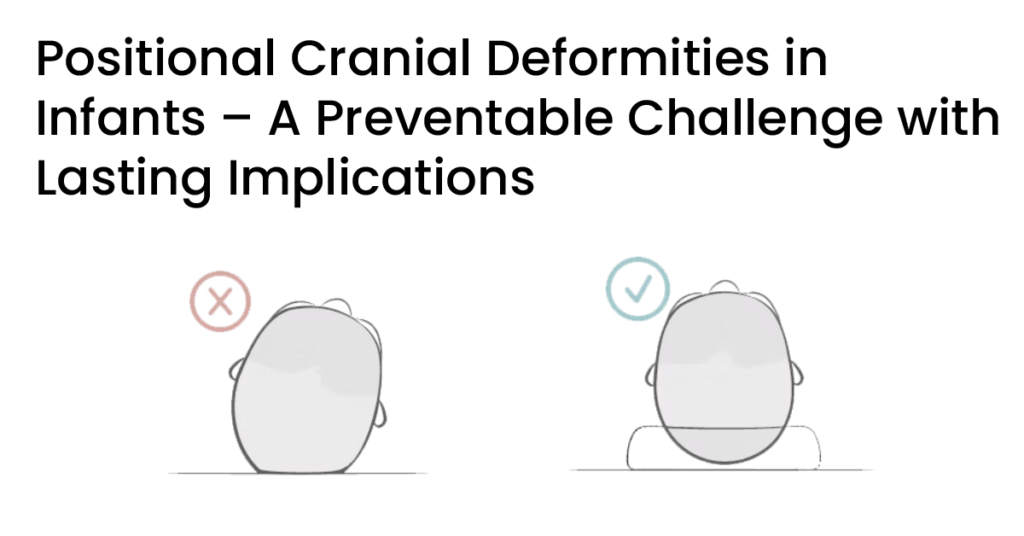
Since the early 1990s, the incidence of positional cranial deformities (PCDs) has increased significantly – an unintended consequence of the life-saving supine sleeping recommendation to reduce the risk of sudden infant death syndrome (SIDS). While supine positioning remains a cornerstone of safe infant sleep, its widespread adoption has coincided with a rise in plagiocephaly and brachycephaly in otherwise healthy infants, particularly within the first six months of life.
Aetiology and Risk Factors
The neonatal skull is physiologically malleable—essential for both birth and rapid brain growth. However, this plasticity makes the cranium susceptible to deformation with repeated, unvaried pressure. Studies show an incidence of up to 46% in term infants and over 80% in preterm infants at NICU discharge.
Key risk factors include:
- Male sex, first-time parenthood, and constrained intrauterine position
- Birth interventions (forceps, vacuum), macrosomia, prematurity
- Postnatal factors: exclusive supine positioning, torticollis, side preference, reduced tummy time, and low activity levels
Diagnosis and Differentiation
Clinical assessment remains the gold standard. PCDs present with features such as occipital flattening (plagiocephaly or brachycephaly), ear misalignment, and facial asymmetries. Tools like the Cranial Vault Asymmetry Index (CVAI) and Cranial Index (CI) support objective evaluation. It’s important to differentiate from craniosynostosis, where suture fusion leads to fixed deformity—this may require imaging for confirmation.